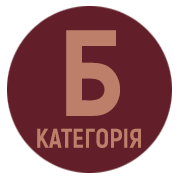DISCURSIVE PORTRAITS OF TOXIC POLITICIANS IN THE USA, GREAT BRITAIN AND UKRAINE (AUDIOVISUAL ANALYSIS)
DOI:
https://doi.org/10.24919/2522-4565.2021.47.34Keywords:
discourse portrait, toxic, verbal, nonverbal, USA, Great Britain, Ukraine, culturally specific, contrastAbstract
The article analyses culturally specific markers of toxicity in the discourse portraits of contemporary politicians in the United States, Great Britain and Ukraine. The object of the research are the political discourses of the United States, Britain and Ukraine; the subject matter of analysis are culturally specific (verbal and nonverbal) markers of toxicity as components of the discourse portraits of Donald Trump (the USA), Nigel Farage (the UK), Oleh Liashko (Ukraine). A discourse portrait of a toxic linguistic personality is understood as a discursive formation containing a set of semantic, stylistic, genre-related and communicative means that distinguish the speech style of such a linguistic personality whose behavior is characterized by a high degree of aggression aimed at causing emotional harm to or discrimination of the opponent. Verbal markers of toxicity include ideological, ethnic, gender-related evaluative statements that demean the personality of another person (not necessarily present) and cause him or her psychological harm or taint their image. Nonverbal markers of toxicity are divided into prosodic (derogatory-patronizing, hysterical, condescending tone of speech), gestural (waving hands and pointing at the interlocutor with the index finger, protective hugs, patting, touching the arms or shoulders of the interlocutor) and mimic (imperious facial expression, crooked mouth, dilated eyes, exaggerated grimaces) means of forming verbal explicates of toxicity. Culturally specific markers of toxicity in the discourse portraits of the three politicians are expressed by both the public agenda that is relevant to each country, e.g. racial and gender discrimination (the USA), Euroscepticism (the UK), anti-corruption efforts (Ukraine), and the aggressive-emotional type of the speakers whose speeches are characterized by a tendency to inflict emotional harm on the opponent through verbal manipulation and fake accusations, as well as the use of nonverbal aggression – hysterical manner of speech, impulsive movements of the arms and hands, head, body and exaggerated facial expressions.
References
Еременко Е. Порно как токсичный контент. Studia Culturae. 2013. № 15. С. 75–81.
Ковалевська А. Нейтралізація патогенних дискурсів : стратегія спростування. Наукові записки Вінницького державного педагогічного університету імені Михайла Коцюбинського. Серія «Філологія». 2020. Вип. 31. С. 132–141. DOI: 10.24919/2308-4863/34-2-24.
Методология исследований политического дискурса: актуальные проблемы содержательного анализа общественно-политических текстов / под ред. И. Ухвановой-Шмыговой. Минск : БГУ, 2002. Вып. 3. 358 с.
Москвин Д. Визуальные репрезентации в политике и перспективы визуальных методов исследований в политической науке. Символическая политика. 2012. № 1. С. 81–84.
Петлюченко Н. Харизматика: Мовна особистість і дискурс. Одеса : Астропринт, 2009. 464 с.
Сальникова Е. Феномен визуальности и эволюция визуальной культуры : дис. ... докт. культур. наук : 24.00.01. Москва, 2012. 675 с.
Шкворченко Н. Токсичные информационные контенты в политической коммуникации США, Великобритании и Украины. Knowledge, Education, Law, Management. 2021. № 3 (39) 2. P. 121–126.
Шкворченко Н. Токсичний політичний дискурс у США й Україні : когнітивно-дискурсивні контрасти. Записки з романо-германської філології. 2021. Вип. 1 (46). С. 127–134.
Шкворченко Н. Токсичные вербальные контенты в политических дискурсах США, Великобритании и Украины. Proceedings of the 11th International scientific and practical conference. Toronto, Canada : Perfect Publishing, 2021. P. 436–440.
Coleman P. The Way Out: How to Overcome Toxic Polarization. New York : Columbia University Press, 2021. 296 p.
Dorrian M. Writing on the image: architecture, the city and the politics of representation. London, England : I.B. Tauris, 2019. 266 p.
Pavlíková M., Šenkýřová B., Drmola J. Propaganda and Disinformation Go Online. Challenging Online Propaganda and Disinformation in the 21’st Century. Cham : Springer International Publishing, 2021. 273 p.
Linguistic approaches and modern communication technologies in political discourses in Europe and the USA (contrastive aspect) / N. Shkvorchenko et al. Cuestiones Políticas. 2021. № 39 (70). P. 821–837. DOI: 10.46398/cuestpol.3970.49.
Steffan D. Visual politics: investigating the visual communication strategies of political parties and candidates from a longitudinal and comparative perspective. Baden-Baden : Nomos, 2021. 116 p.



